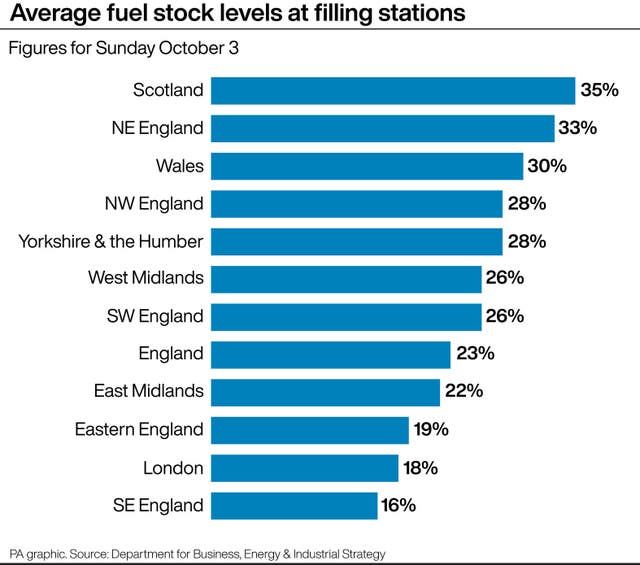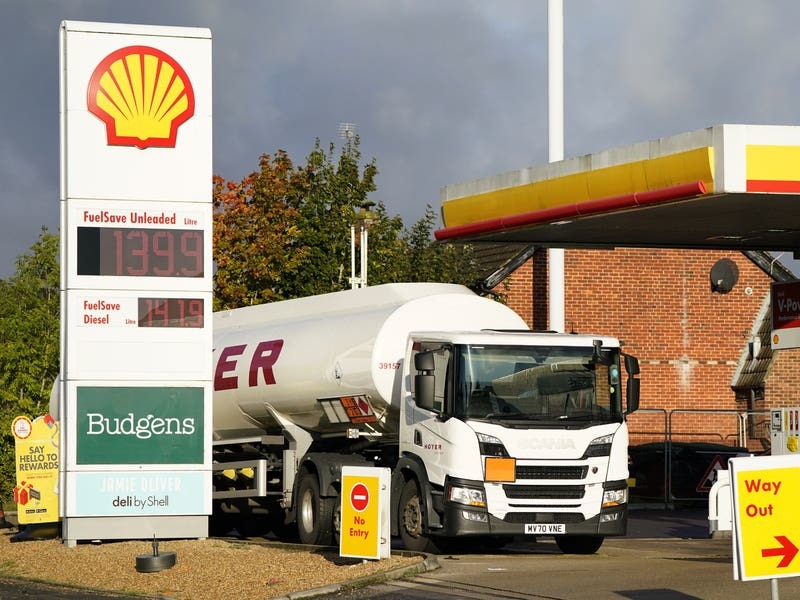Stock levels at Britain’s petrol stations recovered to an average of 25% on Sunday, new figures show.
But there was “significant regional variation” ranging from just 16% on average in the South East to 35% in Scotland, the Department for Business, Energy and Industrial Strategy (BEIS) said.
Average stock levels sank to a low of 15% on Saturday September 25, the day after panic buying began.

Tanks were typically around 33% full before the crisis began.
On Friday September 24, fuel sales were up 80% compared with normal levels.
Sales remained “substantially above” average until the middle of the following week when they “began to trend back to normal levels”, BEIS added.
The amount of fuel delivered to petrol stations was ramped up following shortages.

Gordon Balmer, executive director of the Petrol Retailers Association, said on Wednesday that 13% of independent filling stations in London and the South East still do not have fuel.
He warned: “This is leaving some motorists continuing to feel insecure about fuel availability at their local neighbourhood filling stations.
“Independent forecourts report a complete lack of visibility as to when their next delivery might arrive, and some have been dry for four days and still waiting for a delivery.”

He added: “Much more attention on this issue affecting this region is urgently needed.”
RAC fuel spokesman Simon Williams said shortages have been “most keenly felt by smaller retailers who don’t tend to buy fuel as frequently”.
He added: “Following the recent rush on the pumps, the vast majority of retailers needed to replenish their stocks at the same time which put enormous stress on supply chains.”






